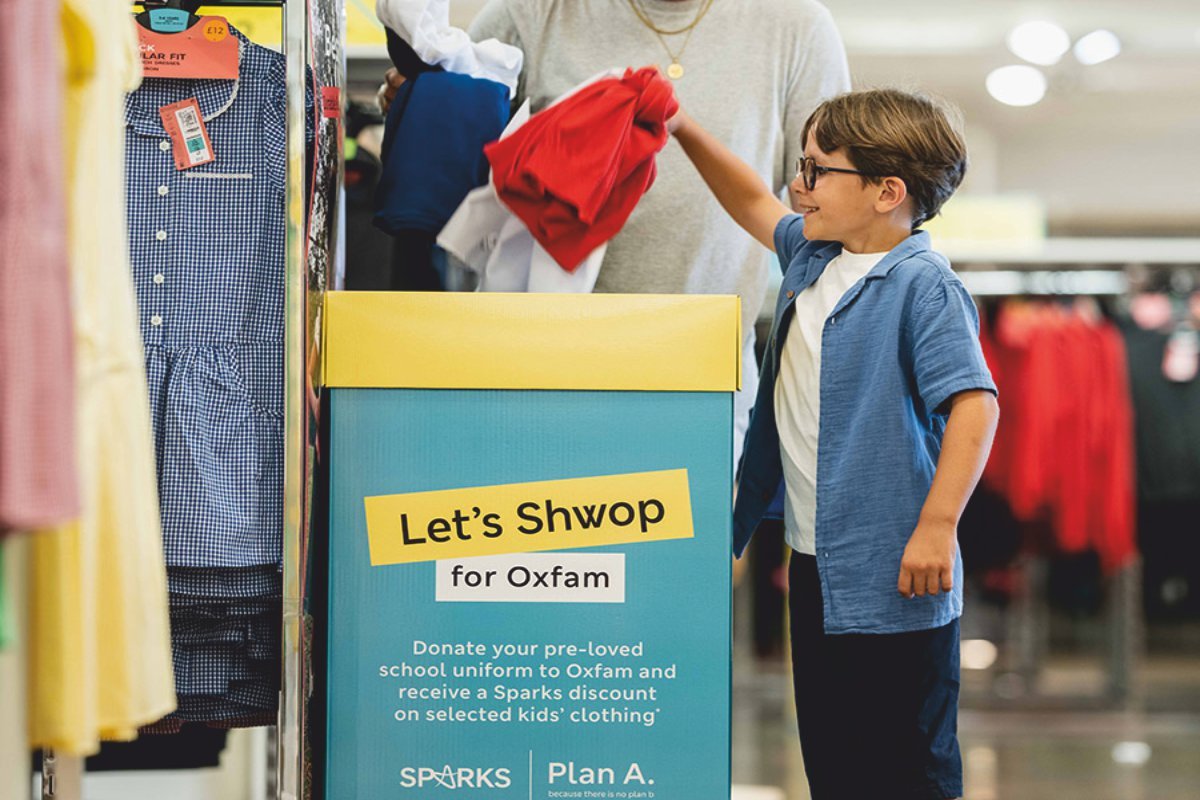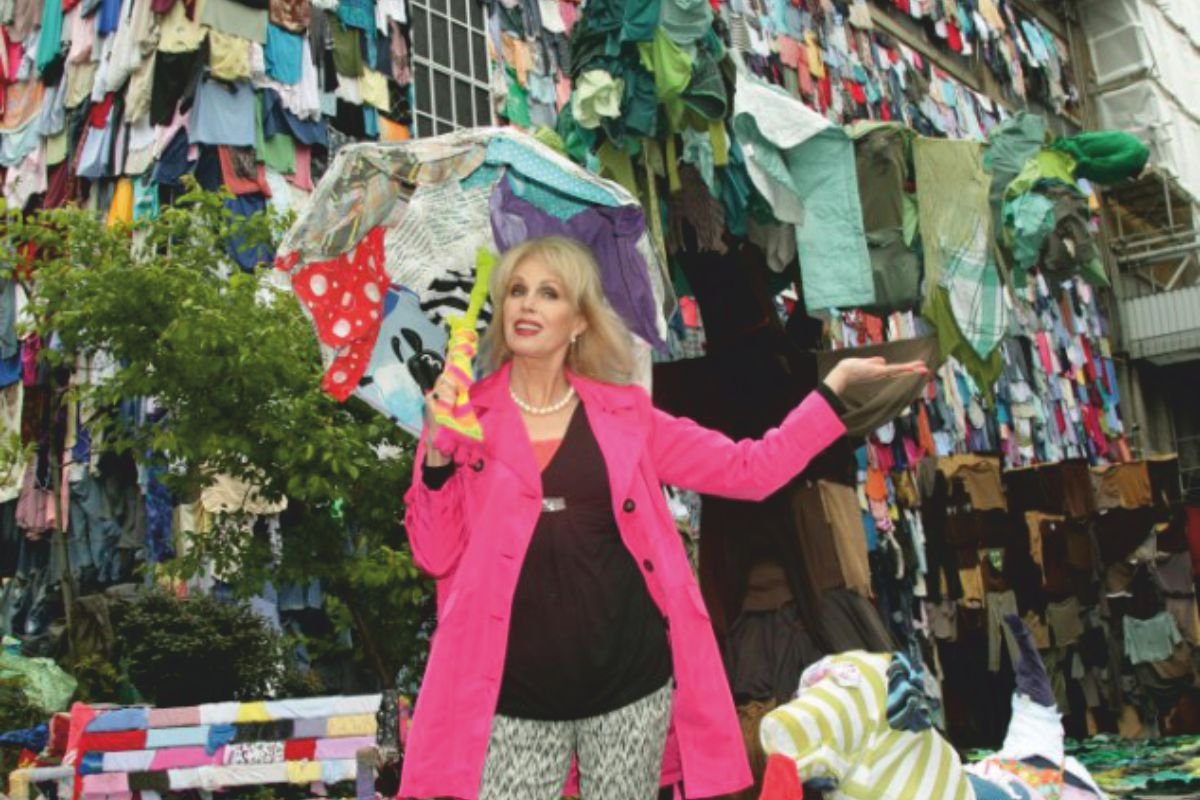In a world that’s becoming increasingly aware of environmental and social responsibilities, companies are taking center stage in making sustainable choices. One such company leading the way in sustainable fashion is Marks & Spencer (M&S), a British multinational retailer. Marks & Spencer has embarked on an innovative CSR (Corporate Social Responsibility) campaign called “Shwopping” to revolutionize the fashion industry’s approach to sustainability. In this article, we will delve into the details of the Shwopping campaign, exploring its origins, goals, impact, and how it has influenced the fashion industry.
Introduction to Shwopping
Marks & Spencer, often referred to as M&S, is a well-established retail giant with a history spanning over a century. It has earned a reputation for providing quality products to consumers. However, M&S also understands its role in addressing the environmental and social challenges posed by the fashion industry.
The Shwopping campaign was launched by M&S in 2012 with the ambitious goal of creating a more sustainable and circular fashion industry. The name “Shwopping” is a blend of “shopping” and “swapping,” signifying a new way of approaching fashion. Instead of merely shopping for new clothing and discarding old ones, Shwopping encourages consumers to swap or recycle their used garments, contributing to a more sustainable and eco-friendly fashion cycle.
The Objectives of Shwopping
The Shwopping campaign by Marks & Spencer (M&S) is not merely a simple recycling initiative; it’s a multifaceted approach to address some of the most pressing issues in the fashion industry. In addition to its immediate goals of recycling and charitable support, Shwopping encompasses a broader set of objectives. These objectives not only focus on the environmental aspects but also extend into areas like consumer education, circular economy promotion, and industry-wide transformation.
Let’s explore these objectives in more detail to gain a comprehensive understanding of how Shwopping aims to make a meaningful and lasting impact on the fashion landscape.
The Shwopping campaign was designed to achieve several key objectives:
Reduce Landfill Waste: One of the primary goals of Shwopping is to divert clothing and textiles away from landfills. Globally, the fashion industry has been notorious for contributing to excessive textile waste, and Shwopping aims to address this issue by providing an avenue for recycling and reusing clothing.
Raise Awareness: M&S recognizes the importance of educating consumers about the environmental impact of fashion. Shwopping serves as a platform to raise awareness about sustainable fashion choices and the need for responsible consumption.
Support Charitable Causes: M&S partners with Oxfam, a renowned global charity, as part of the Shwopping campaign. Through this partnership, they aim to provide support to various charitable causes while encouraging consumers to donate their unwanted clothing.
Promote Circular Fashion: The campaign promotes the concept of circular fashion, wherein clothing is designed to be reused, remanufactured, or recycled. This contrasts with the traditional linear fashion model, which involves the production, use, and disposal of clothing.
Drive Innovation: Shwopping encourages innovation in the fashion industry by supporting research and development in sustainable materials and production processes.

How Shwopping Works
Understanding how the Shwopping campaign works is essential to appreciate its practicality and effectiveness. Shwopping presents a straightforward and accessible approach to address the fashion industry’s sustainability challenges. By actively involving consumers and leveraging strategic partnerships, it creates a ripple effect that extends far beyond a simple clothing donation. In this section, we will delve into the mechanics of Shwopping, breaking down the steps involved and highlighting the collaborative efforts that make it a potent force for change.
The Shwopping process is relatively straightforward:
Donate Old Clothing: Consumers are encouraged to bring their old or unwanted clothing to participating M&S stores. These items can be from any brand, not just M&S.
Drop in “Shwop Boxes”: M&S stores have designated “Shwop Boxes” where customers can deposit their clothing donations. These boxes are easily accessible and clearly marked, making it convenient for shoppers to participate.
Partnering with Oxfam: Once collected, the donated clothing is sent to Oxfam, where it is sorted and processed. Items in good condition are sold in Oxfam stores, online, or repurposed. The proceeds generated from sales are used to support Oxfam’s charitable initiatives.
Recycling and Repurposing: Clothing that cannot be sold is recycled into new products or repurposed in various ways, reducing waste.
Transparent Reporting: M&S provides regular updates and reports on the Shwopping campaign’s progress, including the number of garments collected and the impact on charitable causes.
The Impact of Shwopping
The Shwopping campaign, initiated by Marks & Spencer (M&S), is not just a drop in the ocean of sustainable initiatives. It has made waves in the fashion industry since its inception. The impact of Shwopping goes far beyond the superficial aspects of clothing recycling and charitable contributions. This section delves deeper into the campaign’s profound and far-reaching effects, shedding light on how it has influenced not only consumer behavior but also industry practices and broader environmental goals.

As we explore the impact of Shwopping, it becomes evident that this initiative is a catalyst for change, inspiring both consumers and fashion industry stakeholders to embrace a more sustainable and responsible approach to clothing consumption and production. From reducing textile waste to supporting charitable causes, Shwopping’s influence can be seen in various facets of the fashion landscape, driving positive transformations along the way.
Since its inception, the Shwopping campaign has made significant strides in advancing sustainability in the fashion industry. Here are some of the notable impacts of the campaign:
1. Reducing Textile Waste
One of the campaign’s primary achievements has been diverting vast quantities of clothing from landfills. By providing consumers with a simple and convenient way to donate their old clothing, Shwopping has contributed to the reduction of textile waste.
2. Supporting Charitable Causes
The partnership with Oxfam has been instrumental in supporting various charitable causes, including poverty alleviation, disaster relief, and development programs. Shwopping’s financial contributions to Oxfam have had a meaningful and positive impact on vulnerable communities worldwide.
3. Raising Awareness
Shwopping has succeeded in raising awareness among consumers about the environmental and social challenges associated with the fashion industry. It encourages consumers to think more critically about their fashion choices and promotes responsible consumption.
4. Fostering Collaboration
The Shwopping campaign has fostered collaboration within the fashion industry. It has inspired other retailers and brands to explore similar initiatives, contributing to a more comprehensive shift toward sustainable fashion practices.
5. Promoting Circular Fashion
By encouraging consumers to recycle and repurpose clothing, Shwopping promotes the concept of circular fashion. This approach focuses on extending the lifecycle of garments, reducing the industry’s environmental footprint.
The Fashion Industry’s Response
Marks & Spencer’s Shwopping campaign has not gone unnoticed in the fashion industry. It has prompted discussions and actions across the sector:
1. Adoption of Similar Initiatives
Other retailers and brands have taken cues from Shwopping and launched their own clothing recycling and donation programs. This demonstrates a growing recognition of the importance of addressing fashion’s environmental impact.
2. Sustainable Fashion Collections
Many fashion brands are incorporating sustainability into their collections by using eco-friendly materials, reducing waste, and adopting ethical manufacturing practices. This shift aligns with the principles of circular fashion promoted by Shwopping.
3. Increased Transparency
Consumers are increasingly demanding transparency from fashion brands regarding their sustainability efforts. This has led many companies to share information about their supply chain practices, ethical sourcing, and environmental impact.
4. Eco-Friendly Innovations
In response to the sustainability challenge, the fashion industry has seen innovations in eco-friendly materials and production processes. These innovations aim to reduce the environmental footprint of clothing production.
Challenges and Future Outlook
While the Shwopping campaign has made significant progress in promoting sustainable fashion, challenges remain:

1. Consumer Behavior
Changing consumer behavior is an ongoing challenge. Encouraging consumers to embrace recycling and responsible consumption requires continued education and awareness-building efforts.
2. Scalability
Expanding the reach of initiatives like Shwopping to a global scale presents logistical challenges. Scaling up such programs while maintaining their effectiveness is an ongoing consideration.
3. Industry-Wide Adoption
While some brands have adopted sustainable practices, there is still a long way to go for the fashion industry as a whole. Achieving industry-wide adoption of sustainable and circular fashion principles is a complex task.
4. Innovation and Technology
Further innovation is needed to develop sustainable materials and technologies that can replace traditional, environmentally harmful practices in the fashion industry.
Despite these challenges, the future of sustainable fashion looks promising. As more consumers, brands, and retailers recognize the importance of responsible fashion choices, the industry is poised for transformation.
Conclusion
Marks & Spencer’s Shwopping campaign serves as a remarkable example of how a single company can initiate positive change in the fashion industry. By promoting responsible consumption, recycling, and charitable support, Shwopping has contributed to a more sustainable and circular fashion ecosystem. Its impact extends beyond Marks & Spencer, inspiring other brands and consumers to make more eco-conscious choices. As the fashion industry continues to evolve, initiatives like Shwopping remind us that sustainability is not just a trend but a responsibility that benefits the planet and its people. It’s a testament to the power of corporate social responsibility campaigns in shaping a more sustainable future for all.










